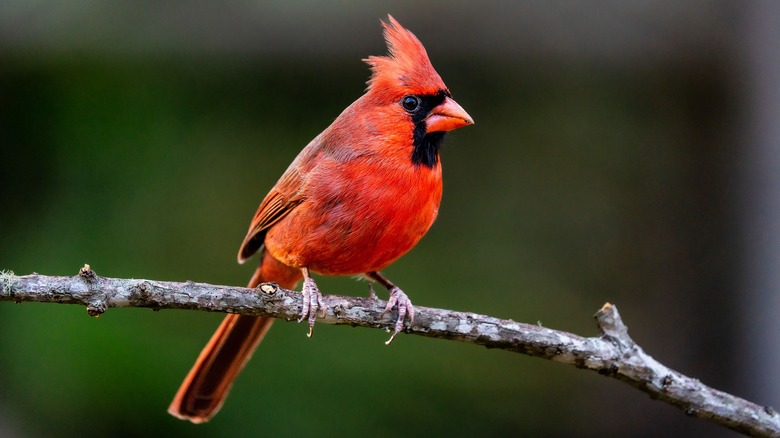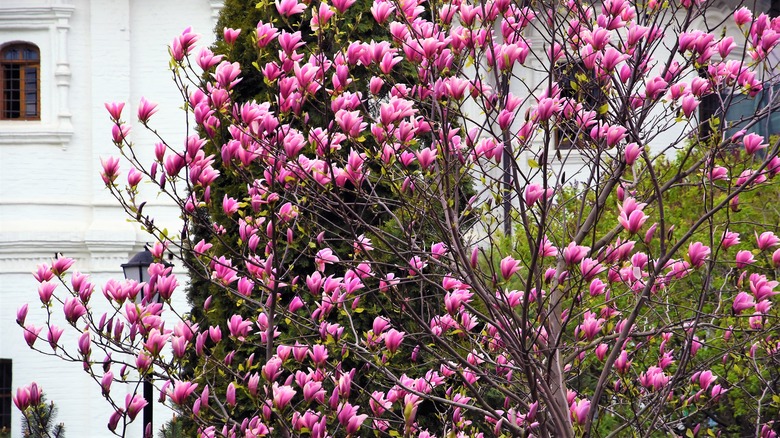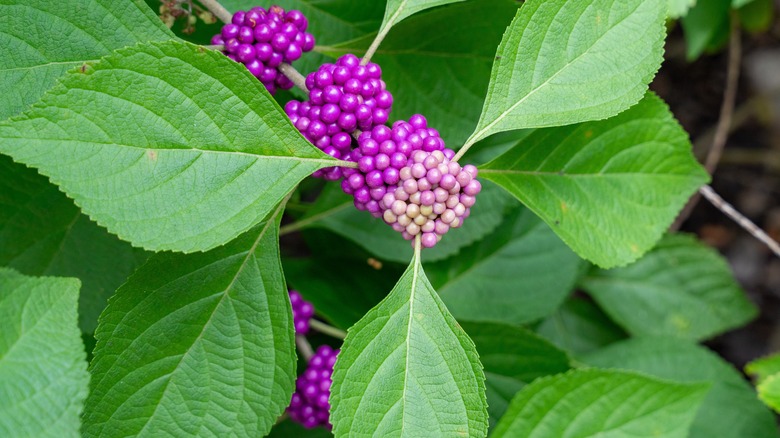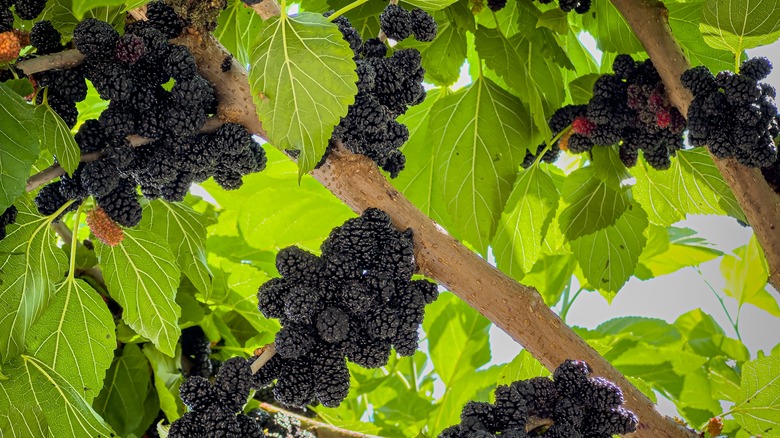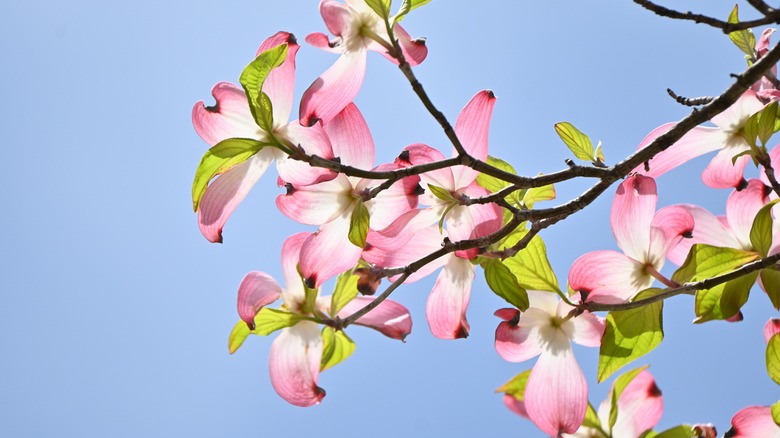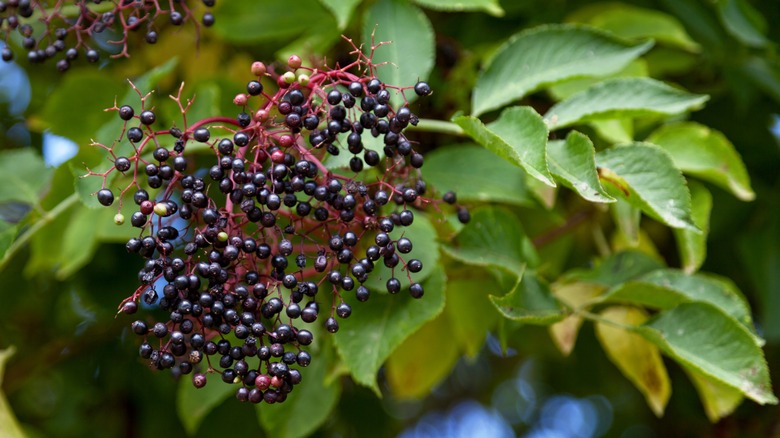Beautiful Trees That Will Have Cardinals Flocking To Your Yard
There is nothing quite like the quiet chirps of birds in your own backyard. Those chirps are enhanced when the birds are as gorgeous as the vibrant red cardinal. If you are hoping to attract cardinals and their beautiful voices to your yard, you're in luck — cardinals are relatively easy birds to lure in and are attracted to food sources like berries and seeds. So, while adding a water source, like a fountain, or hanging a bird feeder is sure to attract cardinals, the best way to do it is by planting their favorite trees.
While not all trees may work for your landscape, cardinals are not very picky about their location. In fact, cardinals can be found in most of the eastern and central parts of the United States, meaning it isn't too hard to get them to make their way into your backyard. If you're ready to sit outside with a book and a song from a nearby cardinal, these are the trees you'll want to have in your backyard.
Magnolia trees
Whether you live in a warmer climate or a climate that sees harsh winters, magnolia trees are an ideal option for your landscape – and cardinals agree. When searching for the perfect landing spot, cardinals are mostly looking for nourishment. Magnolias offer a food source through their bright red fruit that grows during the warmer months. They also produce seeds in the winter that cardinals can enjoy when berries are scarce. When cardinals are breeding, they tend to stray away from seeds and berries and look for caterpillars instead. Magnolia trees are also a great source for caterpillars, so cardinals will be flock to your yard no matter the season.
In addition to their vibrant food sources, magnolia trees also provide cardinals with comfort and protection. Their large leaves and thick branches are great for cardinals who may need to hide from predators, allowing them to perch comfortably for extended periods.
American beautyberry
Cardinals are known for loving their berries, so if you really want to wake up to a beautiful red bird perched on a branch in your yard, you'll want to focus on berry-heavy trees. The American beautyberry, while technically a tall shrub more than a tree, is a great option as it produces bright, colorful berries that cardinals will flock to. Plus, while the beautyberry produces its lush berries in the summer until the fall, the berry bundles continue to grow during the winter, providing cardinals with a year-round food source.
Just beware: the berries aren't only loved by cardinals. Other birds will flock to your beautyberry shrub as well, which is great, but along with that comes pests like raccoons and animals you don't want in your yard, such as foxes. Plus, cardinals may avoid your yard if they know it is a hotspot for predators. If you are in an area that has an abundance of those animals, be aware of the beautyberries allure before planting in your backyard.
Mulberry
Mulberry trees are small-to-medium sized plants that have become popular for their long, red fruit. Similar to a raspberry in appearance, the mulberry fruit, which is native to North America, is a hot commodity among cardinals. This type of mulberry is known as the red mulberry, which is a nod to the color of the fruit, but there are two other types of mulberry as well.
White mulberry, which is more common in Asia, does have white berries, but the trees are more often used for timber (in fact, some species of white mulberry do not have fruit at all). Black mulberry trees, on the other hand, are native to western Asia and have been introduced to North America. They have juicy berries that are dark purple, almost black, and are actually said to taste better and juicier than red mulberries. But, since the white and black varieties are not native to North America, they can be considered an invasive species and a threat to the red mulberry trees, so be sure you know if they are safe for your area before planting.
Flowering dogwood
Planting low-maintenance flowers is also a great way to attract cardinals to your yard. Cardinals seek out plants that provide seeds, such as flowering dogwood trees. These trees produce pale pink and white flowers that cardinals will look for when searching for a landing spot. The seeds that the flowers produce are a great source of food for the birds and will keep them coming back throughout the year.
Flowering dogwood trees are also great for a year-round option as some of their fruits remain through the winter. These trees can grow up to 20 feet tall, making them easy for cardinals to spot, and they have a wide canopy that they can use for protection and shade. If you are planting a new dogwood in your yard, try to plant it in the springtime or early fall. The plant will need at least six weeks to establish roots before the air gets too cold. You also want to avoid over-fertilizing dogwood trees, and while pruning is not usually needed for this type of tree, if you do choose to prune, opt to do it in the summer months for the best results.
Elderberry
It's no secret that cardinals love berries and fruit, so it makes sense that an elderberry tree would be an ideal option when hoping to attract cardinals. Elderberry trees produce small, black berries, and while humans should not eat an elderberry raw due to the potential toxins in the leaves, birds love them and try to seek these little berries out. But it's not just the berries that have cardinals flocking to elderberry trees — they attract insects as well, giving cardinals an additional food source when they need some protein intake during the breeding months. Plus, cardinals will also look for insects to feed their babies, so they will seek out trees that provide both fruits and insects during those times.
Planting beautiful trees around your home has a ton of benefits. Not only will you have a yard filled with flowers, berries, and lush green leaves, you'll also have some of the most beautiful birds, including the gorgeous red cardinal, flying around, offering a garden oasis right in your own backyard.
